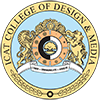Top 5 Skills Every Fashion Designer should have in 2025 and beyond

The fashion industry is evolving faster than ever, shaped by digital transformation, sustainability demands, and rapidly changing consumer expectations. As we step into 2025 and beyond, fashion designers need more than just creativity—they must be equipped with future-ready skills that blend technology, craftsmanship, and strategic thinking.
Whether you dream of launching your own label, designing for global brands, or leading sustainable fashion innovation, mastering these top five skills will set you apart and ensure long-term success.
1. Tech-Savvy Design
Fashion is no longer limited to physical garments. With the rise of digital fashion, 3D garment visualization, and metaverse-ready clothing, designers must adapt to new technologies. Tools like Clo3D, Browzwear, and AI-driven design platforms are revolutionizing how collections are conceptualized and showcased.
Key Abilities to Develop:
- Master 3D design software for faster prototyping and virtual try-ons.
- Learn AR/VR applications for immersive fashion presentations.
- Explore wearable technology and interactive clothing concepts.
Digital design reduces production waste, shortens design cycles, and opens up new opportunities in virtual fashion markets.
2. Design Thinking for Practicing Sustainability
In 2025, sustainability is not just a trend—it’s a necessity. Fashion designers must embrace eco-friendly materials, zero-waste pattern making, and circular economy principles to meet environmental and consumer demands.
Skills to Focus On:
- Understanding biodegradable and bio-fabricated textiles (e.g., mycelium leather, algae fabrics).
- Designing garments for easy recycling, upcycling, or long-term use.
- Integrating sustainable production techniques into every stage of design.
With increasing global awareness and government regulations, sustainable design will define the future of fashion. Designers who champion eco-conscious innovation will lead the industry.
3. Core Skills
While technology evolves, traditional craftsmanship remains the backbone of fashion design. A strong command over garment construction, pattern making, and fabric behavior is essential for creating high-quality designs.
Must-Have Competencies:
- Advanced patternmaking and draping for precise fit and silhouette
- Strong sewing and finishing techniques to ensure garment quality
- In-depth fabric knowledge to choose the right materials for each design
Understanding how garments are physically made ensures designs are not only visually stunning but also practical for production and fit perfectly.
4. Trend Forecasting
In a fast-paced industry, staying ahead of trends is crucial. Modern fashion designers need strong trend analysis skills, backed by AI-driven consumer insights and social media data interpretation.
Key Skills:
- Monitoring global fashion movements and cultural influences.
- Using data analytics to understand consumer preferences.
- Translating trends into innovative yet marketable designs.
Designers who can accurately predict and adapt to market shifts will consistently create collections that resonate with audiences.
5. Business Acumen
Fashion design is also a business. To succeed, designers must think beyond aesthetics and develop skills in brand management, marketing, and strategic decision-making.
Skills to Build:
- Budgeting, costing, and supply chain management for efficient production.
- Creative problem-solving to overcome design and manufacturing challenges.
- Personal branding and digital marketing to promote collections.
Designers with strong business skills can manage their own labels, negotiate effectively, and make impactful contributions to fashion houses.
Future-Proof Your Fashion Career
Fashion in 2025 demands a blend of artistry, technology, and strategic thinking. By mastering these five essential skills, you’ll not only keep up with industry changes but also lead innovation in sustainable, digital, and consumer-centric fashion.
At ICAT College of Design & Media, we prepare aspiring designers for this future with hands-on training in digital fashion tools, sustainable design practices, and business-focused fashion education.
Ready to shape the future of fashion? Explore our Fashion Design Program to start your journey today.




